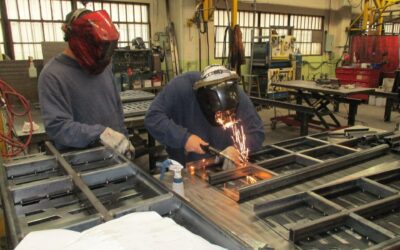Roger Jensen, OMEP’s supply chain expert, shares his thoughts on the coolest cooler. If you’d like help to identify, assess, quantify and mitigate your supply chain risks, contact us.
What happened to the Coolest Cooler?
 Do you remember the Coolest Cooler? It’s a 55 quart portable cooler with a built-in rechargeable ice crusher, Bluetooth outdoor speaker system, and USB charger that set a Kickstarter record in 2014 with 62,000 individuals contributing $13 million. Perhaps you’ve seen the recent flurry of negative press following the company’s failure to ramp production after the July 2015 launch. How did the Coolest Cooler go so quickly from being, well, the coolest thing in crowd-funding and positive consumer awareness, to being a victim of virulent negative attention on social media?
Do you remember the Coolest Cooler? It’s a 55 quart portable cooler with a built-in rechargeable ice crusher, Bluetooth outdoor speaker system, and USB charger that set a Kickstarter record in 2014 with 62,000 individuals contributing $13 million. Perhaps you’ve seen the recent flurry of negative press following the company’s failure to ramp production after the July 2015 launch. How did the Coolest Cooler go so quickly from being, well, the coolest thing in crowd-funding and positive consumer awareness, to being a victim of virulent negative attention on social media?
CEO Ryan Grepper blamed a strike at the motor supplier, hard-to-achieve motor specifications, and the lack of a certified second-source for the cooler’s manufacturing issues. Marketing Director Susan Tower listed a port strike and their suppliers’ inability to fulfill demand to the list of problems. Adding them all up, it’s easy to recognize Coolest Cooler’s launch challenges as the result of their failure to identify and manage risks in their supply chain.
Minimizing supply chain risks
No company is immune to supply chain risk, but few companies invest sufficient energy in minimizing this risk and ensuring they are able to maintain sales when faced with catastrophic supply events. While operations and sales are critical elements of sustained growth and profitability, a single major disruption in a company’s supply can wipe out a year’s profits overnight. Therefore, supply chain risk demands a proportional share of every manufacturer’s organizational focus.
Even when companies do invest in supply chain risk management, most don’t:
- Characterize risk beyond their first-tier suppliers;
- Create mitigation plans;
- Oversee plan implementation.
This lack of optimization is not only found in small- and mid-size manufacturers – I have worked for several $1B+ companies who failed to devote more than a tiny fraction of management activity toward risk management. Those organizations often applied their processes haphazardly, and did not look deeply into their entire supply chain network resiliency.
Effective supply chain risk management
Supply chain risk can be defined as the likelihood and consequence of events that may disrupt the normal flow of material with negative impacts to operations. Resiliency is the capability of the supply chain network to recover quickly and cost effectively with minimal or no impact. An effective supply chain risk management program systematically identifies, assesses and quantifies potential disruptions. The objective? Controlling exposure and reducing the negative impacts from supply disruptions, thereby reducing risk and increasing network resiliency.
Many companies routinely think about supply chain risks in terms of a supplier’s inability to provide products due to natural disasters, political events, labor action or production disruptions. However, it’s also important to consider anything that can potentially impact business strategies, financial goals, regulatory compliance, brand image, reputation, customer satisfaction, intellectual property theft or health & safety.
The benefits of supply chain risk management
The benefits of a robust supply chain risk management program aren’t limited to protecting your company from disruption – you may demonstrate a competitive advantage to your customers, enhance your reputation, de-risk revenue, improve quality and reduce operational costs through better understanding of your entire supply chain network.
So, how does your company measure up in identifying and protecting itself against key risks in your supply chain that can create major disruptions to your business strategies?
Clearly, Coolest Cooler’s management was focused on product development, financial management, production and distribution and under-emphasized their supply chain risk management, with very public adverse consequences. At this time, it’s impossible to know whether the Coolest Cooler will be remembered for their Kickstarter success, their product, or their customer satisfaction nightmare, but it’s evident their failure to manage supply chain risks will always leave us asking what might had been “if only…”



